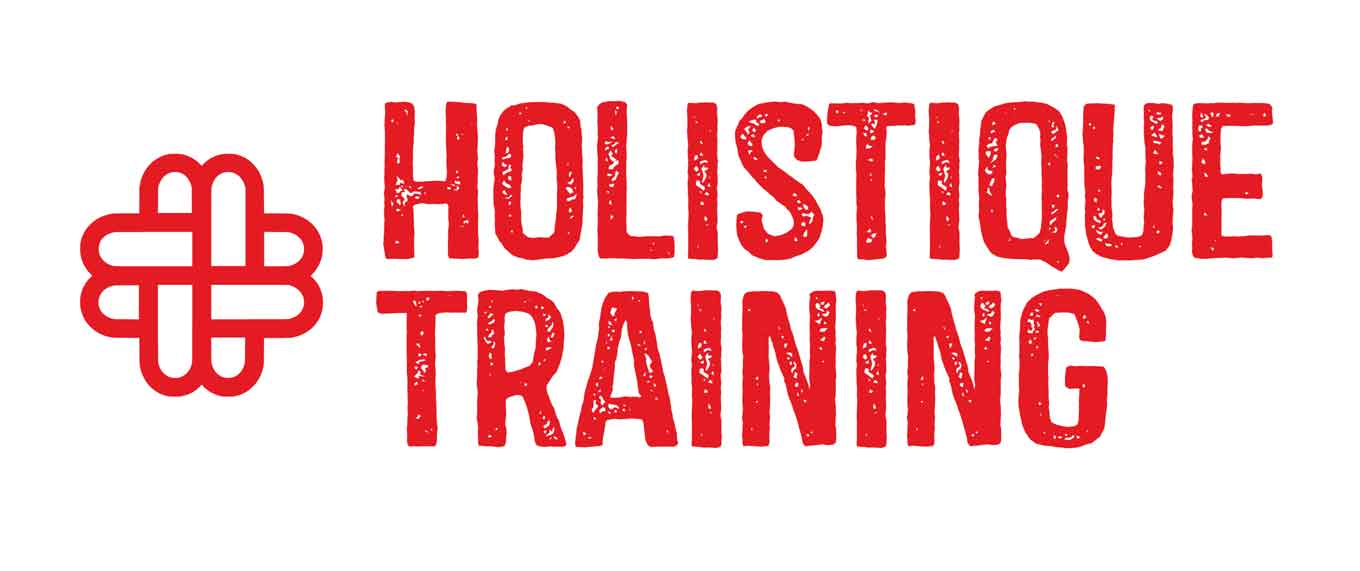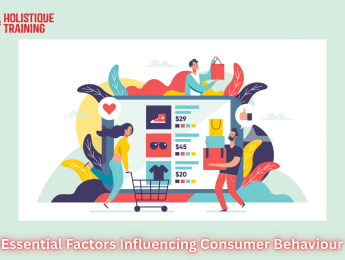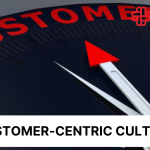- Table of Contents
- Introduction
- Cultural Factors
- Values and Beliefs
- Customs and Traditions
- Cultural Symbols
- Practical Example
- Social Factors
- Family
- Friends and Reference Groups
- Social Class
- Practical Example
- Personal Factors
- Age and Life Stage
- Occupation and Income
- Lifestyle and Personal Values
- Economic Situation
- Practical Example
- Psychological Factors
- Motivation (Maslow’s Hierarchy of Needs)
- Perception
- Learning
- Attitudes
- Practical Example
- Marketing and Situational Factors
- Price
- Product
- Place (Distribution)
- Promotion
- Situational Factors
- Practical Example
- Comparative Table
- Unlock Deeper Consumer Insights with Expert Training
- Conclusion
Introduction
In today’s highly competitive and ever-evolving business landscape, understanding consumer behaviour has become more critical than ever before. As markets expand, competition intensifies, and technology redefines consumer experiences, businesses must develop a deeper comprehension of the factors that drive purchasing decisions. Consumer behaviour refers to the study of how individuals, groups, or organisations select, purchase, use, and dispose of goods, services, ideas, or experiences to satisfy their needs and desires. Grasping the complexities behind these decisions enables businesses to tailor their products, marketing strategies, and customer experiences more effectively.
Accurately analysing consumer behaviour helps companies predict market trends, enhance customer satisfaction, and foster brand loyalty. It allows marketers to segment their audience more precisely, develop targeted campaigns, and deliver value propositions that resonate with distinct customer segments. In the era of data-driven marketing, understanding what motivates customers goes beyond demographics; it requires insight into cultural, social, personal, psychological, and situational influences that interact in complex ways.
In this article, we will discuss five essential factors influencing consumer behaviour: cultural, social, personal, psychological, and marketing and situational factors. Each of these elements plays a unique role in shaping how consumers make decisions, offering valuable lessons for businesses aiming to optimise their marketing efforts and build stronger relationships with their target audiences.
Cultural Factors
Culture encompasses the shared values, beliefs, customs, and behaviours that guide individuals within a particular society. It profoundly shapes consumer preferences, determining how people perceive products, evaluate brands, and make purchasing decisions. Cultural norms influence attitudes towards money, consumption, luxury, health, and even environmental responsibility.
Values and Beliefs
At the core of cultural influence are values and beliefs, which establish what is considered important or desirable. For instance, in collectivist societies like Japan or China, group harmony, family, and community obligations often guide purchasing decisions, whereas individualistic cultures such as the United States place greater emphasis on personal choice and self-expression. This difference explains why luxury brands in Asia frequently market their products as symbols of status that benefit the group or family, while Western marketing often appeals to personal achievement and individuality.
Customs and Traditions
Customs and traditions, passed down through generations, also dictate consumer habits. For example, during Chinese New Year, there is a significant increase in the purchase of luxury gifts, red-coloured items, and traditional foods, while Western consumers exhibit spikes in spending during Christmas sales. These seasonal and cultural events drive cyclical purchasing patterns that businesses must anticipate.
Cultural Symbols
Symbols such as colours, logos, and imagery carry varying meanings across cultures. The colour white symbolises purity in Western cultures but is associated with mourning in some Asian societies. Global brands must adapt their visual and verbal messaging to avoid cultural misunderstandings and enhance local resonance.
Practical Example
A study by McKinsey & Company highlights how luxury consumers in Asia place higher importance on prestige and exclusivity compared to their Western counterparts, who often value authenticity and uniqueness. Such cultural insights enable brands to customise their marketing strategies regionally to align with consumer values.
Social Factors
Social factors encompass the influence of relationships, social structures, and group affiliations on purchasing decisions. Humans are inherently social beings whose choices are often shaped by the opinions, behaviours, and expectations of those around them.
Family
Family plays a central role in shaping consumer behaviour. Spouses may jointly decide on significant purchases such as homes or cars, while children increasingly influence household buying decisions, particularly in categories such as technology, entertainment, and food. Marketers targeting family-oriented products must recognise the decision-making dynamics within households.
Friends and Reference Groups
Friends and reference groups exert substantial influence through peer recommendations, shared experiences, and social comparison. A friend’s endorsement of a restaurant, fashion brand, or technology product can significantly sway purchasing decisions. The rise of social media influencers demonstrates how modern reference groups extend beyond immediate social circles to include online communities.
Social Class
An individual’s social class, determined by factors such as education, occupation, and income, shapes consumption patterns. Higher social classes often prioritise quality, exclusivity, and brand reputation, while lower-income groups may focus on practicality and affordability. For instance, luxury car brands frequently target affluent consumers who seek status symbols, while budget vehicle manufacturers appeal to cost-conscious buyers.
Practical Example
A report by Nielsen found that 92% of consumers trust recommendations from friends and family over any other form of advertising. This underscores the profound impact of social influence on consumer behaviour and highlights the importance of word-of-mouth marketing.
Personal Factors
Personal factors refer to the distinctive attributes and circumstances that differentiate one consumer from another, profoundly shaping their buying behaviour. Unlike broad cultural or social influences, these elements are deeply individualised, often fluctuating as people navigate through different stages of life, career progressions, and personal transformations. For marketers, recognising these nuances is essential to designing highly personalised and effective marketing strategies that resonate on an individual level.
Age and Life Stage
Age and life stage significantly influence consumers’ priorities, needs, and spending habits. Younger consumers, particularly adolescents and young adults, are often driven by trends, peer influence, and a desire for self-expression. They tend to be early adopters of new technology, fashion, and entertainment experiences. As individuals transition into mid-life, their priorities shift towards stability, home ownership, family obligations, financial planning, and long-term security. Later life stages often focus on health management, leisure activities, and legacy planning.
Marketers must align their messaging and product offerings with these evolving needs. For instance, a streaming service may target Generation Z with exclusive content and interactive features, while retirement planning services would focus on middle-aged and senior consumers, emphasising security and peace of mind.
Occupation and Income
A consumer’s occupation not only determines their purchasing power but also shapes their lifestyle and consumption patterns. High-income professionals such as executives, entrepreneurs, or specialists often prioritise premium experiences, luxury goods, and exclusive services. Their spending choices reflect not only personal satisfaction but also social signalling and professional image.
Conversely, consumers in lower income brackets or those early in their careers may focus on value-for-money propositions, discounts, and essential goods. Students, for example, may gravitate towards affordable technology, budget travel, or fast fashion. These variations in financial capacity directly influence pricing strategies, product design, and brand positioning.
Moreover, occupation may also dictate time availability and shopping habits. Busy professionals may prefer convenient online shopping or premium concierge services, while others may engage in more extensive research and price comparison before making purchasing decisions.
Lifestyle and Personal Values
Lifestyle encapsulates how individuals spend their time, their hobbies, interests, values, and personal philosophies. For example, consumers who lead active lifestyles are drawn to fitness products, health supplements, and outdoor activities, whereas artistic individuals may prioritise cultural experiences, books, and creative tools.
Personal values increasingly shape consumer choices, particularly in a global context where ethical consumption is rising. Many modern consumers favour brands that reflect their own values—whether environmental sustainability, fair trade practices, animal welfare, or social responsibility. Businesses that can authentically demonstrate alignment with these values often foster stronger emotional connections with their customers.
This trend is particularly prominent among younger consumers, who are more likely to support brands that advocate for causes they care about. Companies that fail to address these emerging expectations risk alienating value-driven segments of their audience.
Economic Situation
A consumer’s financial situation exerts a powerful and often immediate impact on their spending behaviour. During periods of economic uncertainty or recession, even affluent consumers may become more cautious, delaying non-essential purchases, seeking promotions, or shifting to more affordable alternatives. In contrast, times of economic prosperity often stimulate greater discretionary spending across consumer segments, leading to increased demand for luxury goods, travel, and entertainment.
In today’s volatile global economy, businesses must remain sensitive to these fluctuations and demonstrate agility in adjusting their pricing, promotions, and product mix to reflect the current financial climate of their target audience.
Practical Example
The shifting preferences of Generation Z illustrate the power of personal factors. According to Deloitte’s 2023 Global Marketing Trends Report, Gen Z consumers exhibit heightened concern for sustainability, diversity, and ethical business practices. This generation values transparency, inclusivity, and purpose-driven brands, often making purchasing decisions based not solely on product features but on corporate values and social responsibility. Companies that successfully address these personal drivers can build enduring loyalty and advocacy among younger consumer segments..
Psychological Factors
Psychological factors delve into the internal processes that guide how consumers interpret information, form preferences, and ultimately make decisions. Unlike external influences such as culture or social groups, these cognitive and emotional mechanisms occur within the mind of the consumer. Understanding these layers of thought enables marketers to craft more persuasive messaging, design meaningful brand experiences, and build stronger emotional connections with their audiences.
Motivation (Maslow’s Hierarchy of Needs)
Motivation serves as the driving force behind consumer actions. Abraham Maslow’s hierarchy of needs provides a widely accepted framework that illustrates how individuals prioritise their desires. The model starts with physiological needs (such as food, water, and shelter), progresses to safety needs (financial security, health), then social belonging (friendships, relationships), followed by esteem needs (status, recognition), and culminates in self-actualisation (personal growth, fulfilment). Consumers often make purchasing decisions based on which level of need they are aiming to satisfy at a particular moment.
For example, purchasing a luxury vehicle may serve to fulfil esteem needs by elevating one’s social standing, whereas subscribing to a comprehensive health insurance plan addresses safety needs by offering security and peace of mind. Understanding the underlying motivation allows brands to position their products accordingly and speak directly to their customers' most pressing desires.

(Source: Spotler)
Perception
Perception is not merely about receiving information; it involves how consumers select, organise, and interpret stimuli to make sense of the world around them. Two individuals may interpret the same advertisement in completely different ways, shaped by their unique life experiences, cultural backgrounds, and existing brand perceptions. This is why identical marketing messages can trigger varied emotional responses across different audience segments.
Furthermore, perception is influenced by selective attention (what the consumer chooses to notice), selective distortion (how they interpret information), and selective retention (what they remember). Marketers must carefully consider these dynamics when designing campaigns, ensuring that their messages are not only memorable but also interpreted in a way that aligns with the intended brand image.
Learning
Learning reflects the lasting change in consumer behaviour that arises from experience. It plays a crucial role in building brand loyalty and shaping repeat purchasing behaviour. Positive interactions with a brand—such as excellent customer service, consistent product quality, or fulfilling product performance—reinforce positive learning, leading consumers to return and advocate for the brand. Conversely, negative experiences can have long-lasting adverse effects, prompting consumers to avoid certain brands or products altogether.
In today’s digital world, learning is also accelerated by observational learning (seeing others’ experiences through reviews, testimonials, or influencer content) and operant conditioning (rewards and consequences linked to purchasing decisions, such as loyalty points or satisfaction guarantees). Successful marketers leverage these mechanisms to continually reinforce positive associations with their brand.
Attitudes
Attitudes are enduring psychological tendencies that influence how consumers respond to specific products, brands, or marketing messages. They comprise three components: cognitive (beliefs), affective (emotions), and behavioural (intentions). Once a favourable attitude towards a brand is established, it often leads to customer loyalty, even when alternative options offer similar or superior features.
Marketers strive to cultivate positive attitudes by consistently delivering on brand promises, fostering emotional connections, and aligning with customer values. Changing a negative attitude, however, requires sustained effort, clear repositioning, and sometimes rebranding. Emotional branding strategies—such as those employed by successful lifestyle and technology brands—often aim to deepen these attitudinal bonds over time.
Practical Example
Despite offering products at premium prices, Apple consistently maintains one of the most loyal customer bases in the world. This loyalty is not solely based on product specifications but is deeply rooted in strong psychological connections. Apple's brand embodies innovation, simplicity, reliability, and an aspirational lifestyle. Through sleek design, intuitive user experiences, and carefully crafted emotional narratives, Apple engages both cognitive and emotional aspects of consumer psychology. As a result, customers remain committed to the brand even when faced with compelling competitive alternatives, illustrating the profound influence of psychological factors in sustaining long-term brand loyalty.
Marketing and Situational Factors
Beyond individual and social influences, marketing strategies and situational contexts play a critical role in shaping consumer behaviour at the moment of purchase.
Price
Price is a primary determinant of perceived value. Discounts, limited-time offers, and pricing tiers influence consumer perceptions of affordability and quality. Psychological pricing strategies, such as “charm pricing” (e.g., £99.99), subtly encourage purchases by creating a sense of value.
Product
The features, quality, design, and branding of a product directly affect purchasing decisions. Consumers evaluate whether a product meets their needs and aligns with their personal image. Superior product design and innovation often justify premium pricing.
Place (Distribution)
Availability and convenience significantly influence buying behaviour. Products that are easily accessible through multiple channels—physical stores, e-commerce platforms, or mobile apps—enjoy higher sales potential. Efficient distribution networks enhance customer satisfaction.
Promotion
Promotional activities—advertising, sales promotions, public relations, and digital marketing—create awareness and stimulate demand. Tailored promotional campaigns that speak directly to target audiences generate stronger engagement and conversion rates.
Situational Factors
- Location: Consumers are more likely to make impulse purchases in engaging retail environments.
- Timing: Seasonal sales, holiday promotions, and payday proximity affect buying decisions.
- Mood: A positive emotional state can increase purchasing likelihood.
- Technology: The rise of digital platforms enables instant gratification, personalised recommendations, and frictionless transactions, further influencing consumer choices.
Practical Example
During Amazon’s annual Prime Day, limited-time discounts, exclusive deals, and personalised recommendations create a sense of urgency and excitement that drives record-breaking sales figures. This showcases how well-executed situational marketing can trigger mass consumer participation.
Comparative Table
Factor | Key Elements | Primary Influence Area | Example |
Cultural | Values, traditions, beliefs | Core identity formation | Luxury purchases in Asia |
Social | Family, friends, social class | Social validation | Peer recommendations |
Personal | Age, income, lifestyle | Individual preferences | Fashion choices by age |
Psychological | Motivation, perception, learning | Internal decision process | Brand loyalty (e.g. Apple) |
Marketing & Situational | 4Ps, shopping context | Triggering purchase | Impulse buying online |
Unlock Deeper Consumer Insights with Expert Training
Understanding consumer behaviour is only the first step; mastering the techniques to analyse and apply this knowledge can give your business a decisive edge. If you are ready to elevate your skills and build sharper customer profiles, consider enrolling in the Customer Profiling: Techniques & Procedures course offered by Holistique Training. This comprehensive programme provides practical tools, advanced profiling methods, and actionable strategies that will enable you to decode customer needs more accurately and design highly targeted marketing initiatives. Whether you are a marketer, business leader, or data analyst, this course equips you with the expertise to transform insights into measurable business outcomes.
Conclusion
In conclusion, consumer behaviour is a complex and multifaceted discipline shaped by the interplay of cultural, social, personal, psychological, and marketing and situational factors. Each factor contributes uniquely to how individuals perceive products, evaluate options, and ultimately make purchasing decisions.
For businesses striving to achieve sustainable growth, understanding these dimensions is not merely beneficial; it is essential. Integrating insights from all five factors enables companies to design holistic marketing strategies that resonate deeply with their target audiences. By acknowledging cultural sensitivities, leveraging social influence, personalising offerings, addressing psychological drivers, and crafting compelling situational marketing tactics, businesses can foster stronger customer relationships and achieve lasting competitive advantages.
As markets continue to evolve with technological advancements and shifting consumer expectations, businesses must remain agile and committed to continuous learning. Regularly revisiting consumer insights and adapting strategies accordingly ensures that companies remain relevant and responsive to the dynamic nature of consumer behaviour.
























